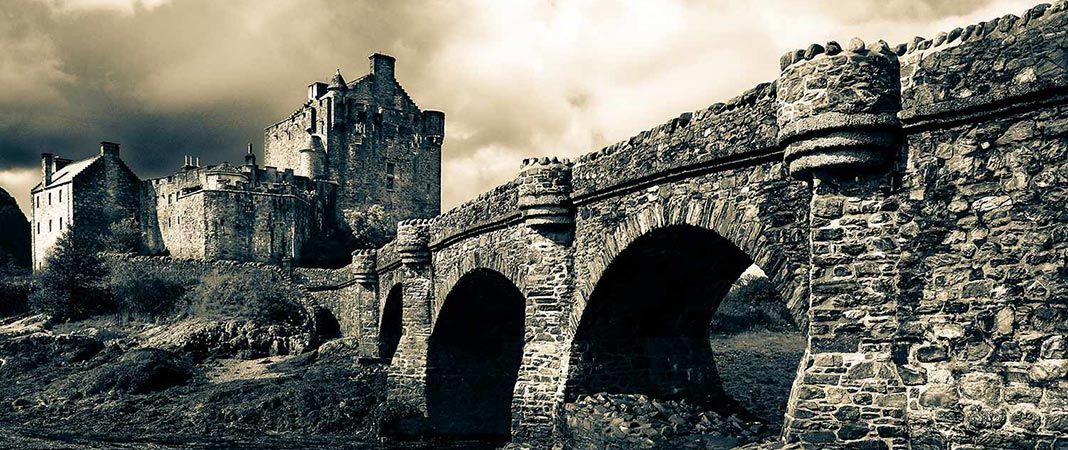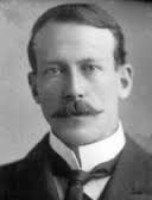

The iconic building is Eilean Donan Castle and it is something of a fraud, a benign and stunning fraud, but a fraud nevertheless. It lies a caber toss from Skye at the meeting of Loch Long, Loch Alsh and the said Loch Duich. Originally a Mackenzie stronghold it was razed in 1719 and remained a ruin for two hundred years. That is until John MacRae-Gilstrap hatched a plan to restore it. MacRae-Gilstrap was also something of a benign fraud. His name was actually simply John MacRae. Gilstrap was his wife's name, Isabella Gilstrap, whom he married in 1897. She was the daughter of George Gilstrap of Newark and niece and heiress to his brother, Sir William Gilstrap, also Newark-born, who had made his money from malting and died a year earlier, and it was his and therefore her money that paid not to restore, for the result was nothing like the original, but to rebuild the castle. Admittedly by then John MacRae owned the castle or at least his family had won claim, again using her money. He was after all a MacRae of Conchra on the shores of Loch Long and on whose lands Eilean Donan in some form or other has stood for eight hundred years. The MacRae were and are still its Constable.
You might by now be asking yourself, what has this to do this football? That's where the portrait comes in and therein lies the tale. The picture is of Stuart MacRae. He was born in India in 1855, both facts that are to be crucial in this story. He was the eldest of five children including three sons of a father born in Nairn and a mother on Lewis. He was by blood as Scots as Scots can be. Moreover, his father, Duncan, was the hereditary chieftain of the MacRae's of Conchra.
Duncan MacRae is buried in the clan cemetery on a mound at Clachan just a few miles from the castle. He lies beside his wife, Grace, and his son, Stuart. Incidentally MacRae in Gaelic means Son of Grace. John MacRae-Gilstrap is buried there too as is Isabella Gilstrap, father, mother, two sons and one daughter-in-law together.
How Duncan and the others were taken to Clachan is not recorded. However, on his death in London in 1927 Stuart's coffin was put on the train to Inverness, transferred onto the train to Kyle of Lochalsh and carried from there by his clansmen, as befits a man who was by then clan chieftain in his own right. And whether Stuart MacRae had the Gaelic, I don't know. His people still do and shinty too. He was certainly a member of the Royal Company of Archers. It is an elite, 450 year old Scottish institution, the sovereign's official bodyguard north of the border and is by invitation only. He was also, a little more hum-drumly, the first president and captain until his death of Newark Golf Club, the same Newark in Nottinghamshire that was the source of the Gilstraps, a living for the MacRaes and Stuart's connection to football. Newark was and still is a centre of brewing. The MacRae brothers made their livings from drink.
